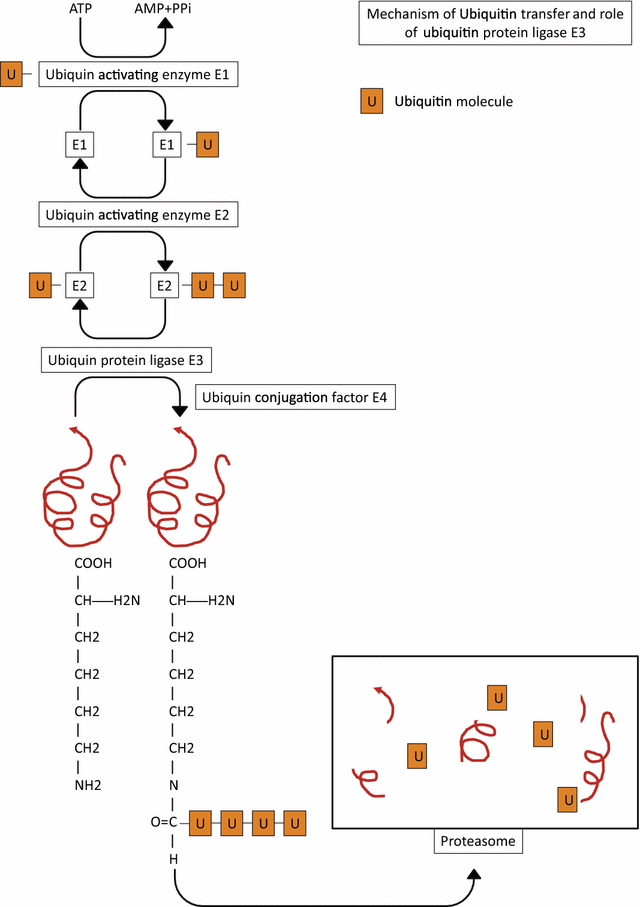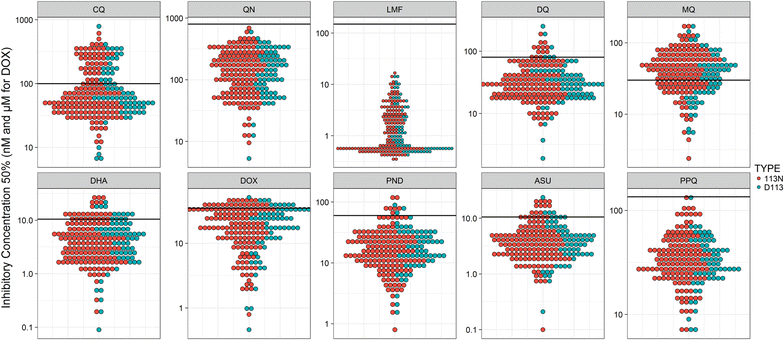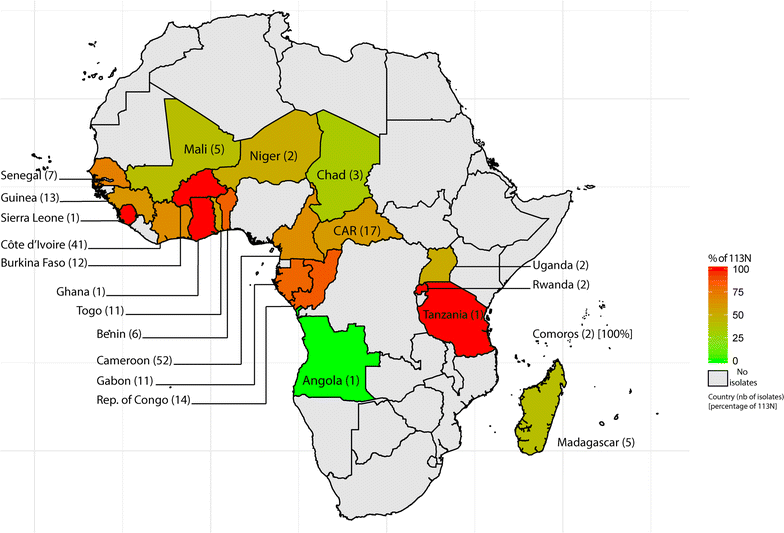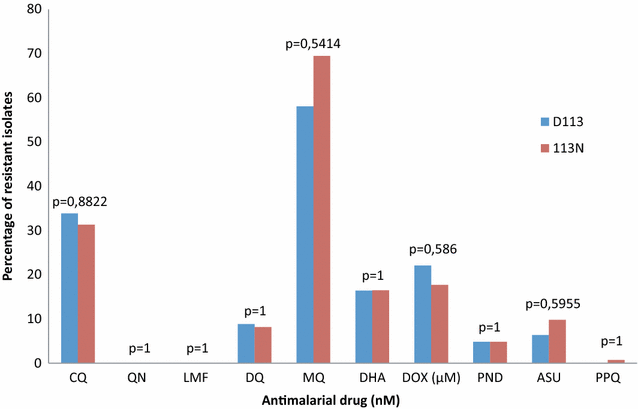The D113N mutation in the RING E3 ubiquitin protein ligase gene is not associated with ex vivo susceptibility to common anti-malarial drugs in African Plasmodium falciparum isolates
- PMID: 29530046
- PMCID: PMC5848522
- DOI: 10.1186/s12936-018-2252-2
The D113N mutation in the RING E3 ubiquitin protein ligase gene is not associated with ex vivo susceptibility to common anti-malarial drugs in African Plasmodium falciparum isolates
Abstract
Background: Plasmodium falciparum resistance to artemisinin-based combination therapy has emerged and spread in Southeast Asia. In areas where artemisinin resistance is emerging, the efficacy of combination is now based on partner drugs. In this context, the identification of novel markers of resistance is essential to monitor the emergence and spread of resistance to these partner drugs. The ubiquitylation pathway could be a possible target for anti-malarial compounds and might be involved in resistance. Polymorphisms in the E3 ubiquitin-protein ligase (PF3D7_0627300) gene could be associated with decreased in vitro susceptibility to anti-malarial drugs.
Methods: Plasmodium falciparum isolates were collected from patients hospitalized in France with imported malaria from a malaria-endemic country from January 2015 to December 2016 and, more particularly, from African French-speaking countries. In total, 215 isolates were successfully sequenced for the E3 ubiquitin-protein ligase gene and assessed for ex vivo susceptibility to anti-malarial drugs.
Results: The D113N mutation in the RING E3 ubiquitin-protein ligase gene was present in 147 out of the 215 samples (68.4%). The IC50 values for the ten anti-malarial drugs were not significantly different between the wild-type and mutant parasites (p values between 0.225 and 0.933). There was no significant difference in terms of the percentage of parasites with decreased susceptibility between the D113 wild-type and the 133N mutated P. falciparum strains (p values between 0.541 and 1).
Conclusion: The present data confirmed the absence of the association between polymorphisms in the RING E3 ubiquitin-protein ligase gene and the ex vivo susceptibility to common anti-malarial drugs in African P. falciparum isolates.
Keywords: Anti-malarial drug; In vitro; Malaria; Molecular marker; Plasmodium falciparum; RING E3 ubiquitin-protein ligase gene; Resistance.
Figures




References
MeSH terms
Substances
Grants and funding
LinkOut - more resources
Full Text Sources
Other Literature Sources

